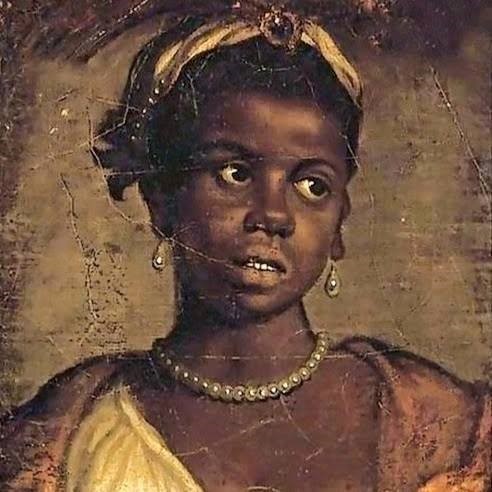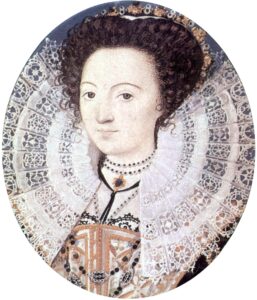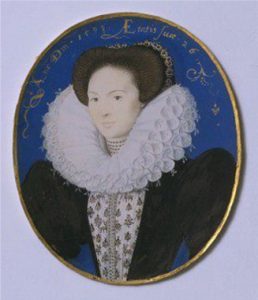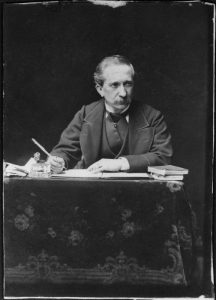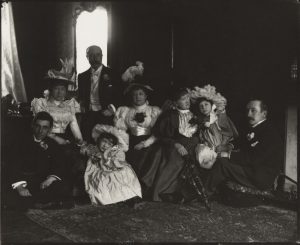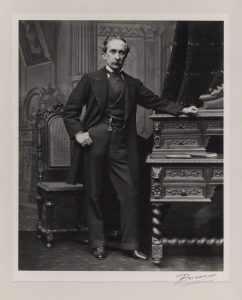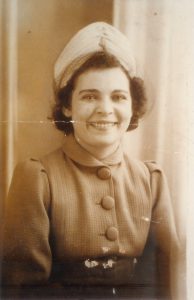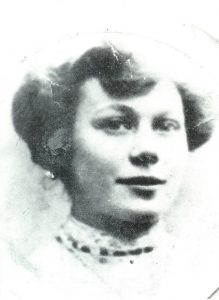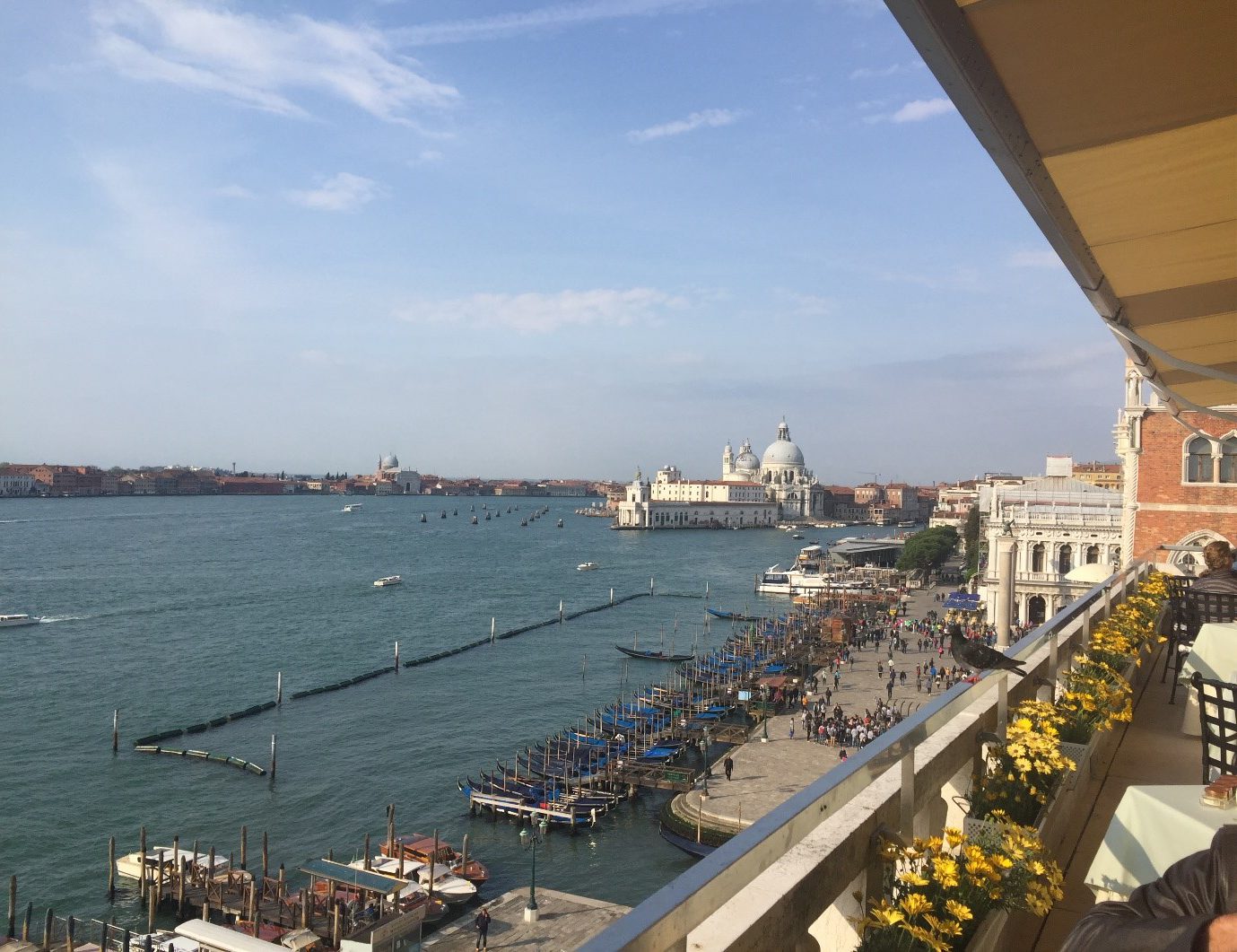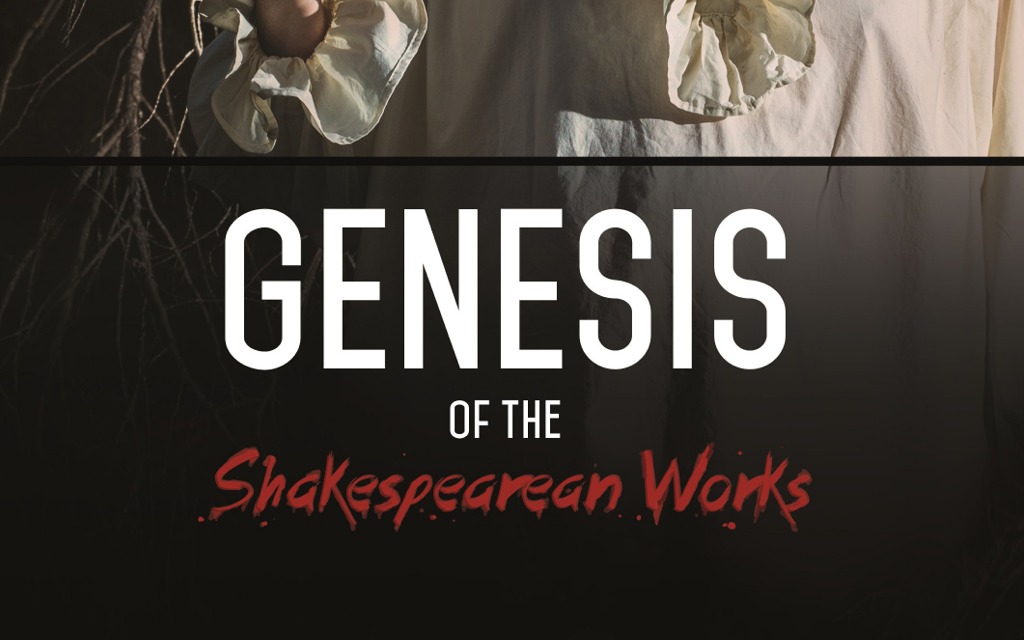To download a pdf copy of this paper, please see below.
Introduction
The reason for writing this paper was to prove or repudiate claims that Emilia Bassano and other Bassano descendants were “blackamoors”. The above portrait has been shared around the world as a depiction of Emilia Bassano after being published on Facebook by Ansell Ortell in 2015, with the assertion that Emilia was the sole author of the Shakespearean works. The inference is that Emilia Bassano was a Blackamoor, which by definition is a “member of the group of Muslim people from North Africa who ruled Spain from 711 to 1492”.[1] This viral post, amongst other things, caused a young Hollywood scriptwriter to contact me regarding proving whether or not Emilia was a Blackamoor. Throughout this paper, I will prove that the Bassano family were not Blackamoors.
When referring to “black Hebrews” in this paper, I refer to the original “black Hebrews” cited in the Tanakh (Old Testament), such as the lineage of Solomon and the “blackish” Shulamite, but not necessarily the ‘Original African Hebrew Israelite Nation of Jerusalem’ who claim to have descended from the ten lost tribes of Israel.[2] Many groups have claims to be true Israelites (true Hebrews), meaning descendants of Abraham, Isaac, and Jacob, later renamed Israel. Some of these groups are in facts of European origin, therefore are descendants of Esau, and are called Edomites, who will be destroyed according to Balaam’s fourth prophecy.[3]
The Assertions
The portrait cited by Ortell above is not of Emilia Bassano, but is a circa 1550 “portrait of a Moorish woman” that was painted by a student at the Venetian School of Paolo Veronese. I suppose this may be why many people have assumed the Bassano’s were ‘Blackamoors’, but this is not the case. Ortell further asserted:
Amelia Bassano is the lady who wrote all of Shakespeare’s plays. Because she was black they would not publish her work. She died in poverty because she never received a dime for her work. Shakespeare was illiterate and could barely write his own name.[4]
Most of my readers know by now that I have written a major academic work investigating the “early plays” of Shakespeare that were performed in London prior to the birth of William Shakespeare and Emilia Bassano. In Volume 1 of ‘Genesis of the Shakespearean Works’, I proved that Emilia did not pen “all” of the Shakespearean plays, although I believe she did pen at least eight of the “latter plays”. There is significant evidence to suggest the earliest play of As You Like It written in the vernacular of “Free Will” may have been penned by her grandfather in Venice, Hieronymus de Bassanus (Jeronimo Bassano), prior to the Bassano family emigrating to England. In an upcoming biography of the Bassano family, I will reveal their origins, along with their nobility, and documented performances in Bassano (changed to Bassano del Grappa after WWII) and Venice.
Ortell also asserted that Emilia died in poverty without her work being published. This is also false, because Emilia’s poetic work of Salve Deus Rex Judæorum (Hail God, King of the Jews) was published in 1611. The title should have indicated immediately that Emilia was not a Blackamoor (black Muslim), but a Jewish woman. In fact, Emilia Bassano was the first Jewish woman in England to declare herself a poet in her 1611 ‘booke’ of poetry, derived from the Aramaic and Hebrew work of Matnitin (Our Mishnah), the very same source used in SHAKE-SPEARES SONNETS, thereby connecting both works to the female Hebraic author. As an Israelite (a true Hebrew) who embraced Jesus Christ as King from a Jewish Essene perspective, Emilia was merely writing of the ignorance of Pharisees and Sadducees, who spent their days debating Oral Judaic law. This is abundantly clear in her statement:
Zeale, Lawes, Religion, now they doe pretend
Against the truth, vntruths they seeke to frame.[5]
As a skilled poet, Emilia was extremely careful with her words to protect her own life, and the lives of her extended family. Those before her were not so fortunate. Thomas Kyd and especially Christopher Marlowe learned the ills associated with writing against the theologically acceptable custom of the day. In May of 1593, Kyd and Marlowe were arrested for suspected involvement in a manuscript containing “vile heretical Concepts denying the deity of Jhesus Christe our Savior”. Without trial, Marlowe was stabbed to death, allegedly over a dispute of payment of a bill. Therefore, it is not surprising that Emilia wrote in a guarded style to protect herself and her family.
Antonio Bassano in his 1544 Sefer ha-Refu’ot (Book of Remedies) refers to his ‘true Hebrew’ heritage from the land of his forefathers. This expression was also used by the dramatist of 1 Henry IV in the words of Falstaff (a ‘true Hebrew Jew’):
You Rogue, they were bound, euery man of
them, or I am a Iew else, an Ebrew Iew.[6]
This canto in our modern language should read:
You rogue, we did tie them up, every single one of
them, or I am a Jew, a true Hebrew Jew.[7]
Antonio wrote: “filii David, filii Shem” which I previously translated as “a son of David, from the lineage of Shem”. However, now that I know the original sources of the Sonnets, and the Messianic significance, I now understand what Antonio meant: which could also be translated as: “son of David, son of Shem (a Levite)” for both were Tzaddikim (Righteous Men), until they sinned. I think Antonio was trying to teach us something deeper, like Emilia Bassano. Son of David is a Messianic title, as is Son of Shem, for “Praise be to the Lord, the God of Shem!” (Genesis 9:26, NIV). This is a Messianic prophecy, in that it is the first indication of the lineage of the Messiah, where He would be a descendant of Shem, rather than through Japheth or Ham. Therein, Antonio was telling us he was of the Davidic lineage and a Levite (musician in the Temple), and in his Latin, Hebrew, Aramaic and Greek texts, he taught on the Messianic redemption – the very same theme of SHAKE-SPEARES SONNETS! Antonio Bassano and his family were a long lineage of Levites, who served the reigning Monarchs with their music, medicines, Scriptural advice, in service to their God, Hashem.
In the Sonnets, Emilia wrote desiring to protect the chastity of women so that all women are not sullied by “evil disposed men”, and the Dark Lady Sonnets are about Adonai, who will rise in Sonnet 127.[8] In Sonnet 53, Emilia wrote about the different types of women: the maidens (the unsullied) who have acted virtuously versus the sullied who descended because of their promiscuity.[9] It is not about a black woman in a relationship with a man! These are the desires of evil, drawn “from filthy mind[s]”.[10] The Sonnets are a prophetic work about what is to Come!
I have proved beyond reasonable doubt that Ortell’s assertions are almost entirely false – Emilia Bassano did not pen the entire Shakespearean works, her works were in fact published, and the Bassano’s were not Muslims. The one assertion that needs further investigation is the possibility that they were black. The Bassano’s certainly were not Blackamoors, but could they have been black Hebrews?
Black Hebrews or Tanned Italian-Spaniards?
There has been much talk over the past few decades about Emilia Bassano-Lanier as the “Dark Lady” of the Sonnets. I have proven in my Comprehensive Commentary of SHAKE-SPEARES SONNETS that Emilia is not the Dark Lady. Ortell also gave the impression that Emilia Bassano was black-skinned. We must investigate the veracity of these claims. In my 2013 book Shakespeare Exhumed: The Bassano Chronicles, I identified the overleaf miniature portrait by Nicholas Hilliard as Emilia Bassano.
The portrait is currently housed in the Victoria and Albert Museum in London (housed in the British Galleries, room 57a, case 3). These miniature portraits were predominantly produced by a nobleman seeking a suitor for his daughter, or a suitor seeking the hand of marriage of his beloved.[11] I believe this is the very nature of the miniature portrait, one capturing her suitor Alphonso Lanier, and one soon after their marriage of Emilia. As Emilia’s father had passed away by 1593, Emilia was aligned with the surname Holland of her sister, hence the reason the portrait was identified by historians as “Mistress Holland”.[12]
|
Figure 1 – Miniature Portraits of Emilia Bassano |
I have no doubt that this miniature portrait is of Emilia Bassano due to the imageries utilized on her bodice and hair comb. I obtained a high-resolution image from the V&A Museum (Victoria and Albert Museum) and enlarged the image by one thousand times the size on a large high-resolution screen to find on the bodice: honeybees, the Tree of Life, and stags. The two main emblems on the Bassano’s earliest coat-of-arms were three honeybees above the Tree of Life, and the stag refers to the family coat of arms of her husband, Alphonso Lanier. The hair comb at the crest of her head is actually a row of double-winged six-legged honeybees all in a line.
From records discovered in Bassano del Grappa, Jeronimo Bassano had two wives, one who passed away, who bore him three sons. He then married Hebbe Bassano, “a woman of colour”, no doubt a Hebrew Jew by their writings, who bore him “Antonio, Giovanni (John), and Giambattista (Baptista)”. Thus, Emilia Bassano was born to a white English court concubine, Margaret Johnson, and Baptista Bassano, a black Hebrew Italian-Spaniard. The two miniature portraits of Emilia are depicted with a white makeup of lead (ceruse), water, and vinegar, as demanded by all women in Queen Elizabeth I’s court after the Queen contracted smallpox in 1562, and was healed by the “Venetian Ceruse” (Spirits of Saturn), a potion found in Antonio Bassano’s 1544 Sefer ha-Refu’ot (Book of Remedies).[13] Emilia married Alfonso Lanier, son of Lucretia Bassano and Nicholas Lanier, grandson of Antonio Bassano and princess Elena de Nasi ― a “Rex Judæorum” descended from Rabbi Makhir ben Yehudah Zakkai Nasi (Makhir), the 8th century royal kingly and priestly lineage of the Israelites during the Babylonian captivity.[14] Emilia was in fact of noble Hebrew blood on both sides of the family, but this is a deeper discussion for a later biography.
The Bassano’s referred to as ‘Black’ in Depositions
Creechurch Lane was a regularly visiting place of the earlier Bassano family, because the earliest secret Jewish Synagogue was on Creechurch Lane, London. In fact, on 23 September 1584 Arthur Bassano (1547-1624) and other court musicians (probably his brothers) were arrested at Creechurch as below:
Sept. 23. Declaration by John Spencer, sheriff of London, of the misdemeanors committed by Arthur Bassano and other Her Majesty’s musicians, at the muring up of a way and gate at a place called Creechurch, Aldgate, pretended to be privileged. Their violence and insolence towards the Recorder of London.[15]
It seems the matter was not heard until 3 October 1584, as the below entry provides further details:
Oct. 3. John Spencer, Sheriff of London, to same. Details the circumstances under which Arthur Bassano and other Her Majesty’s musicians had been committed to custody. Will attend the Council, as ordered, on Thursday next. Incloses: Declaration by Mr. Sheriff Spencer, of the insolence and opprobrious language of Arthur Bassano and his fellows, to himself and the Recorder of London, and obstructing their officers while muring up the way and gate at Creechurch, Aldgate.[16]
In the same location at Creechurch, Mark Anthony Bassano was arrested after a clash with Soldiers only ten months later on 16 August 1585:
Aug. 16. Depositions of Valentine Wood and Tho. Norton, relative to an affray between Mark Anthony Bassano, one of Her Majesty’s musicians, and certain soldiers without Aldgate, near the Bars. Opprobrious words uttered by Bassano against the soldiers, then on the point of departure for Flanders. Bassano in danger of being slain, the soldiers thinking him to be a Spaniard.[17]
The depositions (witness statements) by John Spenser described the Bassano’s as “a little black man was booted” probably referring to Arthur Bassano, and “a tall black man” probably referring to one of his brothers.[18] We must also examine why the Bassano’s acted so viciously against Spenser and later Fleetwood regarding their arrest. William Fleetwood was the Recorder of London in 1584. Fleetwood ordered the Bassano brothers be taken to Newgate Jail. When the Bassano’s learned it was Fleetwood, they reacted vehemently, almost prophetically, asserting in would not end well for them. In the end, Fleetwood and Spenser were made to apologize and pay the Bassano’s food and wine bills run up while in prison.
Spenser was known for rounding up foreigners, especially Jews and Spaniards. The “black” (as they were called) Bassano brothers were not only musicians, but the Bassano’s were merchants for many generations. So much so that they held monopolies over trade in England, given only to favoured courtiers to the Crown.[19] Spenser was one of the Bassano’s direct competition in bringing goods back from Venice, Spain and Turkey. It was in his best interests to have the Bassano’s arrested. Could he have referred to them as ‘black’ because they were swarthy, or was it because they resembled Jewish Spaniards whom he despised? In the 16th century, many English Puritans despised Italians, Spaniards, and especially Jews. In the legal case of Jacques Francis, a Venetian sailor by the name of Anthony de Nicholao Rimero asserted Francis was “a morisco [Spanish: Moor] born where they are not christened” and no weight should be given to anything Francis said. In the deposition of Domenico Erizo, he described Francis as a “pagan infidel black”.[20]
In fact, many 16th century English people referred to Jews as “black”, whether they were in fact black or merely dark-skinned Europeans, because they believed Jews were associated with “the devil” in the murder of Christ. They failed to recognize that Jesus Christ surrendered to the Will of his Father – this was the Divine Will of God. Jews have been accused of poisoning wells and even bringing the Black Plague, although all these claims have now proven to be false. It was merely fearmongering by many writers, such as Christopher Marlowe, Thomas Dekker and James Howell who wrote of Jews as a “curse”, “uncouth looks” and a “stench”. William Brereton wrote of Jewish men as “black”. Quite often Jews with long dark hair were depicted as “black men”. Therefore, the usage of “black” in the deposition may have merely been used as a slur against the Bassano brothers because they were Jewish Italian-Spaniards, though I tend to think it was because three of the brothers were “black” Hebrews, as recorded in Bassano del Grappa. Now let us examine the arguments against.
Court Documents
Historic documents prove that the Bassano’s frequented England as early as 1517 before they emigrated to England at the request of King Henry VIII on 1 October 1539. The Bassano’s had performed numerous times in England and there is evidence that some of the brothers resided in England from around 1531. [21] Whilst Henry VIII had a passion for Venetian music, it was Queen Catherine of Aragon (1485-1536) who had a passion for Spanish and Italian music, and she seemed to have an attraction to black servants. Her father was Ferdinand II, King of Sicily and Aragon (a region of Spain), hence her passion for Spanish and Italian music. Queen Catherine’s entourage included a “black trumpeter” by the name of John Blanke, where the Exchanger Roll of 1507 recorded:
Item to John blanke the blacke Trumpet for his moneth wages of Novembre
last passed at viij d the day…………………….xx s [20 shillings][22]
There was also a Fraunces Negro who worked in the royal stables.[23] Therefore, it is quite plausible that King Henry VIII sought out the Bassano family for Queen Catherine. This would suggest that the Bassano’s might have been black considering the sons of Antonio Bassano were referred to as “black” in later depositions. In tome 2 of A Complete Commentary of the Shakespearean Sonnets, I will reveal further documents revealing the Bassano family nobility, which will assist us in clarifying this matter.
The Bassano’s Performed in the Blackamoor Inn
The Derbyshire descendants of Antonio Bassano have also come into question regarding one record of performance at Blackamoor Inn in Ashbourne. From this record, some deduce they were Blackamoors, which I have already proven is false. However, we must investigate this record to repudiate this claim.
Christopher Bassano was a Vicar Choral at St Oswald’s Church. There are notes to confirm his brother Richard visited the church in 1710 to set up the new organ with Thomas Cook, who was also of Staffordshire. In true family tradition, on Sunday 6 August 1710, around the time the ‘Bassano’s Church Notes’ were penned, after the service had concluded, Richard Bassano played “a grave sonata” in an “elaborate Italian manner” before a church full of people. He sang Psalm 121 “as an anthem” and “set a new standard to be aimed at”,[24] most likely with Christopher on violin:
I look up to the mountains— does my help come from there?
My help comes from the LORD, who made heaven and earth!
He will not let you stumble; the one who watches over you will not slumber.
Indeed, he who watches over Israel never slumbers or sleeps.
The LORD himself watches over you! The LORD stands beside you as your protective shade.
The sun will not harm you by day, nor the moon at night.
The LORD keeps you from all harm and watches over your life.
The LORD keeps watch over you as you come and go, both now and forever.[25]
Philo claimed the practice of singing psalms originated from the Jewish Essenes.[26] The fact that the Bassano family held Jewish, predominantly Essene traditions, is of particular interest as we investigate the origin of the Shakespearean works filled with Jewish Essene imagery. Kabbalists use Psalm 121 with amulets “to ward off Lilith, the Queen of demons”.[27] There was a pocketsize Medieval Jewish book used by Kabbalists called Sefer Shimmush Tehillim (Book On the Use of Psalms) that was also banned by the Index Librorum Prohibitorum of 1559, alongside the Bassano’s Kabbalistic books. Sefer Shimmush Tehillim claims if a person sings Psalm 121 reverently seven times, you will be safe from all evil occurrences by angelic protection.[28] Further information is contained in Volume 1 of Genesis of the Shakespearean Works.
This performance by Richard Bassano mentioned above, sparked a revival in Derbyshire with 5,000 people from all the neighbouring gentry filling the Church on 13 September 1710 to hear the orchestra with Christopher Bassano on violin. The celebrations continued most of the day with a concert in the evening at Blackamoor’s Head Inn.[29] In the records of the St Oswald’s Church, there is an entry as follows:
1710 – The performers [the Bassano’s] were entertained at dinner at the parish charge, service being ended at about 2 o’clock, and at night in the great parlour at the Sign of the Black moor’s Head. They made a fine consort both of instrumental and vocall musick, and so concluded the musick of ye day.[30]
The Bassano’s continued their celebrations at the Blackamoor Inn in Ashbourne. Some commentators seem to think this means the Bassano were Blackamoors. However, the Inn was named so because of it was a traditional English bar made of “dark wood panelling topped by a dark red frieze and ceiling”,[31] not necessarily because it was frequented by Blackamoors.
Conversely, there were a lot of pubs in Derbyshire, some still standing today from the 16th century. Why did the Bassano’s choose the Blackamoor Inn? Could they have been black? Could they have been attracted by the name of the inn? Or could it have just been in close proximity to the Church?
Records show the Blackamoor Inn was located at 10 St John St, Ashbourne, and was later renamed Black’s Head and amalgamated with The Green Man Royal Hotel next door.[32] St Oswald’s is located on the same road only 480 metres away, so it was a short stroll. Thus, it could be because they allowed Blackamoors in the pub, or it could simply be because it was the local traditional English bar within walking distance. It might have had nothing to do with ethnicity or colour of their skin. We might never know the answer to this question.
London Descendants
Conversely, we must also consider the descendants, because our hereditary traits do not lie. As some of you may know, I happened to marry a descendant of Antonio Bassano, and my eldest son looks very similar to the early sketches of Shakespeare. Whilst my son is not a descendant of William Shakespeare, it makes me wonder whether the early sketches were of the real dramatists of the “Early Plays” later attributed to William Shakespeare.
Antonio Bassano had eleven children, so the Bassano family is quite extensive. One of Antonio’s lineages moved to Staffordshire, then onto Derbyshire, before many of them moved back to London. Some emigrated to the United States and some in the last generation emigrated to Australia. One particular lineage was Alessandro Bassano (1829-1913), who was a photographer who served Queen Victoria using the company Bassano Ltd. Interestingly, Alex (as called by the English, although his name by birth was Alessandro) took numerous photographs of actors in many of the Shakespearean plays. He also left us a quite a number of family portraits.
|
Figure 2 – Alessandro Bassano. © National Portrait Gallery, London.
|
In some photographs Alessandro had quite pale skin and in some darker skin, but some of his children did exhibit signs of his Italian-Spaniard heritage.
|
Figure 3 – Alessandro Bassano, family portrait. Circa late 1890’s. © National Portrait Gallery, London.
|
|
Figure 5 – Camilla Teresa (‘Lily’) Serjeant (née Bassano). © National Portrait Gallery, London. |
Figure 4 – Alexander (born Alessandro) Bassano.
© National Portrait Gallery, London.
The only photographs that have any hint of dark skin is a self-portrait of Alessandro circa 1880 above, and a circa 1860 portrait of Alessandro’s eldest daughter Camilla Teresa (‘Lily’) Bassano. Alessandro was a 10th generation English born descendant of Antonio Bassano. The rest of his family exhibits little evidence of any “black” heritage.
Later Derbyshire Descendants who Moved back to London
I had the pleasure of spending some months with Ada Goodwin-Bassano (1916-1995) when she visited Australia for my wedding in 1988 with her granddaughter. I remember Ada fondly as a sweet little Jewish lady of Venice with quite an olive complexion. If it were not for her strong English accent, I would not have believed Ada was born in England. In her elderly years she never ventured out much, yet she was quite dark for an English woman. Her daughter, Valerie Drinkwater, is now in her mid-seventies and does not venture out much either, yet she also has a distinct olive complexion. Overleaf are photographs of Ada Bassano in her late teens and an early photograph of her mother, Florence Emily Bassano (1884-1955) who has a similar dark-skinned (but not black) Jewish-Italian appearance.
|
Figure 6 – Ada Goodwin-Bassano (1916-1995) |
Florence Emily Bassano (1884-1955)
As you can see by the above photographs, both Florence and Ada were quite dark-skinned for women born in England. This could merely be their Italian-Spanish heritage; however, Florence is a direct 12th generation great granddaughter of Antonio Bassano, and Ada is 13th generation.
Conclusion
To conclude, the Bassano’s were not Blackamoors (black Muslims). The first-generation six Bassano brothers who emigrated to England were Israelites (true Hebrews), from a long rabbinic family of Master Kabbalists. Therefore, the claim of Emilia being a Blackamoor (black Muslim) is hereby repudiated. The sons of Antonio Bassano were identified as “black”, probably from their grandmother, Hebbe Bassano, also an Israelite from their teachings. The descendants of Antonio Bassano do show some signs of dark skin, maybe a dark olive complexion. Either way, they were dark, and their plays, poetry, and masques presented their incredible dark Hebrew heritage from one angle or another. Most of the Shakespearean plays had characters from the Bassano family, not Shakespeare’s family… Emilia depicted him as “obstinate, cunning, wanting, instead he chose to mutter, slander, walking the great highway of foul adulteries ― the sullied”.[33]
_______________________________________________
[1] Cambridge Dictionary: Moor. http://dictionary.cambridge.org/dictionary/english/moor
[2] Jewish Virtual Library, Minority Communities in Israel: Black Hebrews. http://www.jewishvirtuallibrary.org/black-hebrews
[3] Numbers 24:17.
[4] Ortell, Ansell (19 August 2015), WOW, What Do You Know?!!! – Amelia Bassano is the lady who wrote all of Shakespeare’s plays. https://www.facebook.com/photo.php?fbid=10206991532087546&set=a.1732006060755.2095127.1256612986&type=3&theater
[5] Bassano (Lanyer), Emilia (1611), SALVE DEVS REX IVDÆORVM, Richard Bonian, a free copy of the works can be found in the Renascence Editions, University of Oregon, http://darkwing.uoregon.edu/~rbear/lanyer1.html
[6] F1, 1H4 2.4.1137-8.
[7] 1H4 2.4.1137-8 modernized by Peter Matthews.
[8] Matthews, Dr Peter D (2020), A Comprehensive Commentary of SHAKE-SPEARES SONNETS, Bassano Publishing House, Queensland, Australia, ISBN: 9780992285791, p18.
[9] Ibid, p473.
[10] Bassano, Emilia (1594), Willobie His Avisa, Canto XI.
[11] Wikipedia: Portrait miniature, http://en.wikipedia.org/wiki/Portrait_miniature
[12] Matthews, Dr Peter D (2013), Shakespeare Exhumed: The Bassano Chronicles, Bassano Publishing House, Australia, ISBN 9780987365255, pp. 244-7.
[13] Matthews, Dr Peter D (2020), A Comprehensive Commentary of SHAKE-SPEARES SONNETS, Bassano Publishing House, Queensland, Australia, ISBN: 9780992285791.
[14] Ibid, p3.
[15] Queen Elizabeth – Volume 173: September 1584, Calendar of State Papers Domestic: Elizabeth, 1581-90 (1865), pp. 200-204.
[16] Queen Elizabeth – Volume 173: October 1584, Calendar of State Papers Domestic: Elizabeth, 1581-90 (1865), pp. 204-210.
[17] Queen Elizabeth – Volume 181: August 1585, Calendar of State Papers Domestic: Elizabeth, 1581-90 (1865), pp. 256-265.
[18] Deposition by Spenser against Arthur Bassano and other court musicians, August 1584. Also refer London Public Record Office, Ref: SP12/173, No. 25, 47.
[19] Menzer, Paul (2006), Inside Shakespeare: Essays on the Blackfriars Stage, Susquehanna University Press, ISBN 9781575910772, p119.
[20] Depositions of Anthony de Nicholao Rimero and Domenico Erizo, HCA 13/93, ff. 275-6 (28 May 1548) and HCA 24/17.
[21] Matthews, Dr Peter D (2013), Shakespeare Exhumed: The Bassano Chronicles, Bassano Publishing House, Australia, ISBN 9780987365255, pp. 86-7, 95.
[22] Exchequer roll of 1507, E 36/214, f. 109 (7 Dec 1507).
[23] Kaufman, Miranda, Blacks in Tudor Britain. http://www.mirandakaufmann.com/blacks-in-tudor-britain.html
[24] Cox, John Charles (1879), Notes on the churches of Derbyshire (Volume 2), http://www.ebooksread.com/authors-eng/j-charles-john-charles-cox/notes-on-the-churches-of-derbyshire-volume-2-ala.shtml
[25] Psalm 121, New Living Translation.
[26] Smith, William; Cheetham, Samuel (2005), Encyclopaedic Dictionary Of Christian Antiquities (in 9 Volumes), Concept Publishing Company, ISBN 9788172681111, p94.
[27] Levine, F (2000), The Use of Scripture in Practical Kabbalah. http://kabbalah.fayelevine.com/letters/pk010.php
[28] Sefer Shimmush Tehillim (Book On the Use of Psalms): Psalm 121. Also found in The Sixth and Seventh Books of Moses (Part 2) translated by Joseph Peterson (2005). http://www.esotericarchives.com/moses/67moses2.htm
[29] Shaw, George E. (1998), Matters of Life and Death: History in Baptisms, Marriages and Burials as recorded in the Parish Registers of St. Oswald’s Parish Church, Ashbourne, Derbyshire, England – 1539 to 1945, http://www.dustydocs.com.au/link/8/25474/137723/baptisms-marriages-burials-limited-1539-1945-ashbourne-town-on-the-internet.html
[30] Shaw, George, historian: The Green Man and Black’s Head. http://ashbourne-town.com/pubs/green/index.html
[31] Derbyshire – Pubs and Inns with a literary connection, http://www.homesteadbb.free-online.co.uk/derbys.html
[32] Grist, Mark, The Lost Pubs Project: Blackamoor Inn. http://www.closedpubs.co.uk/derbyshire/ashbourne_blackamoorinn.html
[33] Matthews, Dr Peter D (2020), A Comprehensive Commentary of SHAKE-SPEARES SONNETS, Bassano Publishing House, Queensland, Australia, ISBN: 9780992285791, p17.
© 2015-2021 inclusive Dr Peter D Matthews. All rights reserved. This academic paper may be freely used for academic purposes, subject to citing Dr Peter D Matthews as the author.
To download a pdf copy of this paper, click download below:
____________________________________________________
